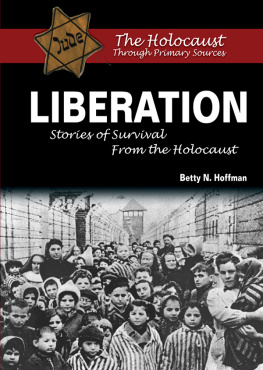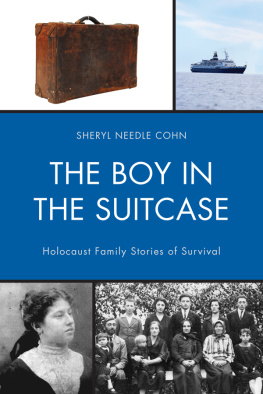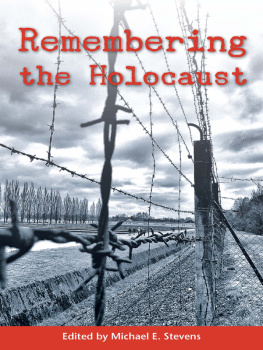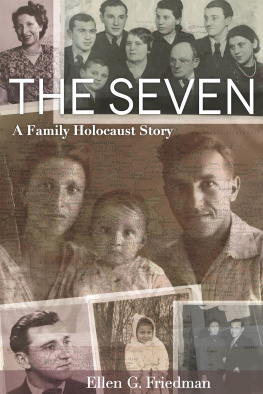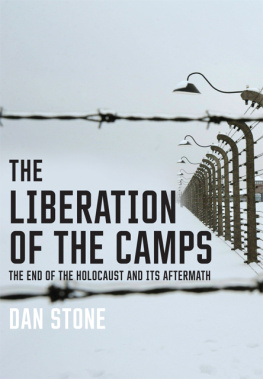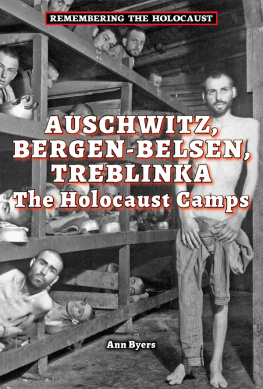Freedom! Freedom! We lived to see it.
A young Jewish survivor wrote these joyous words in his diary after his liberation from a Nazi camp in Germany. Like the thousands of other Jewish prisoners liberated by the Allied armies, his life had been destroyed during the Holocaust. Survivors, amidst their newfound freedom, had to rebuild their lives, often from nothing: no homes, no jobs, and no family. Author Betty N. Hoffman details stories of survival from the Holocaust and the liberation of Nazi Europe, from the Displaced Persons camps to the founding of the State of Israel.
About the Author
Betty N. Hoffman has taught every grade from Kindergarten through college. Her specialties are English and anthropology. Liberation: Stories of Survival From the Holocaust is her fourth book and her first for Enslow Publishers, Inc.
With all due respect to the most sensitive and learned of historians, I feel that only those of us who were its victims can give credence to its horrors.
Henry Levy
As World War II wore on in the spring of 1945, the prisoners in the Buchenwald concentration camp in Germany were starved and weary. On April 8, 1945, the Nazis forced thousands of them to march away from the camp. The Nazi guards left many behind. None of the prisoners knew if they would live or die.
Three days later, American soldiers liberated Buchenwald. Hayim-Meir Gottlieb, a young survivor, wrote in his diary:
Then came April 11. Liberation. An American commander took over the camp. Gradually the inmates of Buchenwald began to live again. Once apathetic and hopeless, they now nearly went mad with joy. Freedom! Freedom! We lived to see it.
Where now? Where to? Things are not so simple. To go back to Poland? To Hungary? To streets empty of Jews, towns empty of Jews, a world without Jews. To wander in those lands, lonely, homeless, always with the tragedy before ones eyes and to meet again a former Gentile neighbor who would open his eyes wide and smile, remarking with double meaning, What! Youre still alive! We now understood that our situation was different from all others in the camp. For us there was no going back where we came from.
In 1932, the National Socialist German Workers Party, also called the Nazi Party, won more votes in the Reichstag (German Parliament) elections than any other political party. This made Adolf Hitler the leader of the most powerful political party in Germany. Although Hitler lost the presidential election to General Paul von Hindenburg that year, he was appointed chancellor of Germany in 1933. When Hindenburg died in 1934, Hitler took control of the government and became dictator.
Hitler hated the Jews and used them as a scapegoat for the problems in Germany. He saw Jews as subhuman. Hatred of Jewsjust because they are Jewsis called antisemitism. Antisemitism can lead to persecution. Hitlers antisemitism led to mass murder.
Other people the Nazis did not want in the new Germany were the Roma and Sinti (previously called Gypsies) and citizens of some countries, such as Poland and the Soviet Union. They also excluded those with different political views, religions, or behaviors, such as Communists, Jehovahs Witnesses, and homosexuals.
In August 1939, Germany and the Soviet Union signed a secret agreement not to fight each other. They planned to take over several countries, including Poland.
World War II officially began on September 1, 1939, when Germany invaded Poland. Within weeks, Germany and the Soviet Union conquered and divided Poland between them.

Image Credit: USHMM, courtesy of Joe Yablon
Three young survivors at the Buchenwald concentration camp in Germany pose smiling for their American liberators. Many survivors, like Hayim-Meir Gottlieb, were overjoyed with their freedom, but were not sure where they would go to start a new life.
Less than two years later, on June 22, 1941, the Germans broke their promise and attacked the Soviet Union. The war spread around the globe. On December 7, 1941, Germanys ally Japan attacked Pearl Harbor in Hawaii. The next day, American President Franklin D. Roosevelt declared war on Japan and, on December 11, he declared war on Germany.
Millions of people were victims of the Nazis. However, a larger percentage of the Jewish population was tortured and killed than any other group. Of an estimated 15.3 million Jews worldwide in 1933, about 9.5 million lived in Europe. The Nazis murdered about 6 million of them.
The Nazis forced many Jews into ghettosrun-down Jewish neighborhoods kept separate from the rest of the population. This made it easier for the Germans to steal the Jews possessions, force them to work, or kill them. The living areas in the ghettos were cramped and dirty. Jews were forced to do brutal work. They never had enough food. Nazis with guns and dogs watched the Jews and kept them from escaping. Many died in the ghettos. Residents of the ghettos would eventually be transported by train to the forced labor and death camps.
In January 1942, high-ranking Nazi officials met in Berlin to discuss the final solution to the Jewish problem. They discussed their plan for the total annihilation of Europes Jews. However, this had already begun in the Soviet Union where killing squads marched Jews to nearby forests or fields and killed them. In other towns, they simply took Jews to the edge of town and shot them, pushing their bodies into mass graves.
Between 1932 and 1945, the Nazis organized about twenty thousand concentration camps. Some of these were transit camps where the Nazis gathered people before sending them to work camps or death camps. Even though the work camps were not specifically death camps, many died there from overwork, starvation, disease, and murder.
The purpose of the death camps was to murder all Jews and others from the so-called subhuman races. The Nazis built gas chambers to kill large groups efficiently. During the worst years, the Nazis gassed as many as six thousand Jews a day at Auschwitz-Birkenau. By the end of the war, more than 3 million Jews had died in the death camps.

Image Credit: ullstein bild / The Granger Collection, New York
A German tank convoy passes through an unidentified Russian town in the fall of 1941. The Germans broke their agreement with the Soviet Union and invaded the country on June 22, 1941.
In many places, Christian families stayed in their villages after the Germans occupied their countries. But Jews could not. To avoid capture, some hid in the forests. But it was very difficult for Jews to fight back. They had few weapons. They knew that if they protested or resisted, the Germans would kill many innocent people in response.
Nevertheless, Jews, when they could, joined the armies in their countries. Others fought in the forests as partisansmembers of small groups that attacked the Germans in occupied areas. Some of the non-Jewish partisan groups were also antisemitic. They refused to admit Jews and sometimes killed them. Others allowed Jews to join but discriminated against them. Some Jews formed their own partisan units, which fought bravely and protected those who could not fight.
In April 1945, Dwight D. Eisenhower, General of the Army, commanded all of the soldiers in the Allied armies that had fought against the Germans. On May 7, 1945, German General Alfred Jodl surrendered to Eisenhower, ending the war with Germany.

